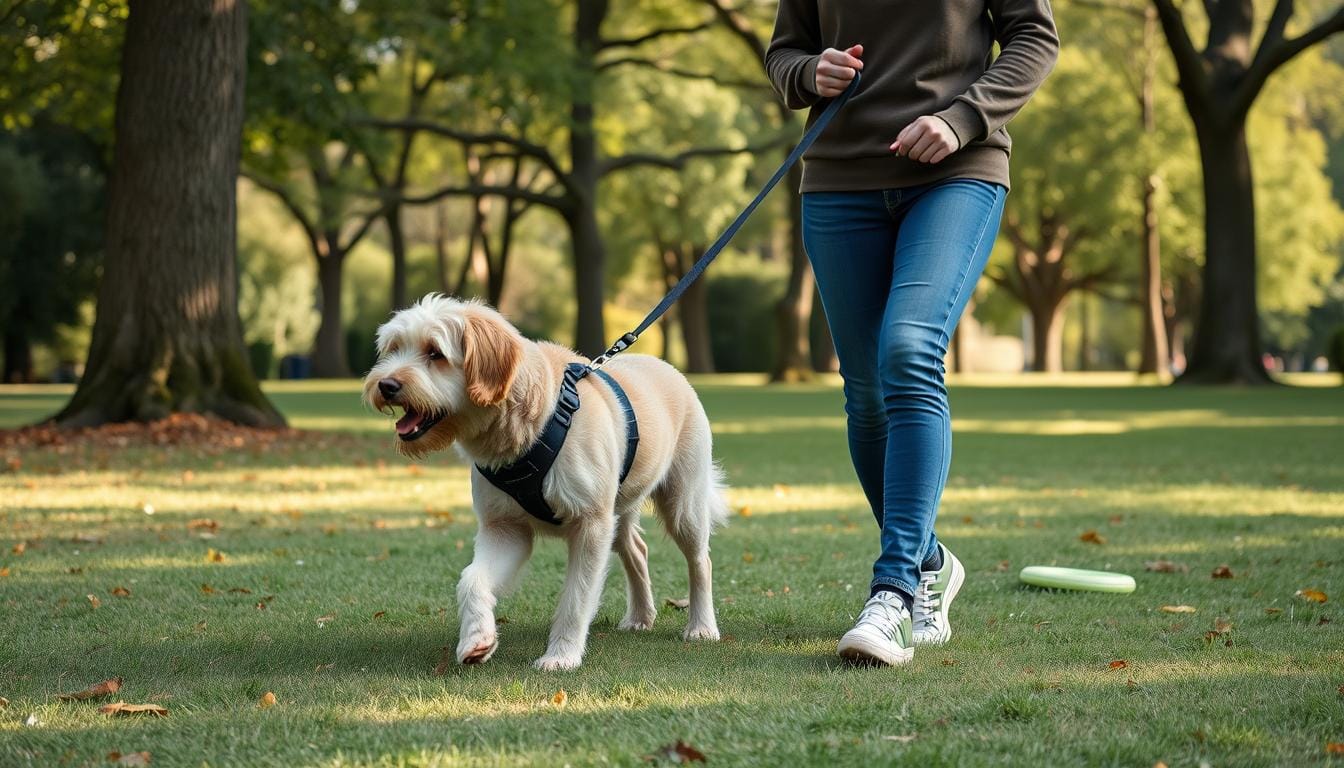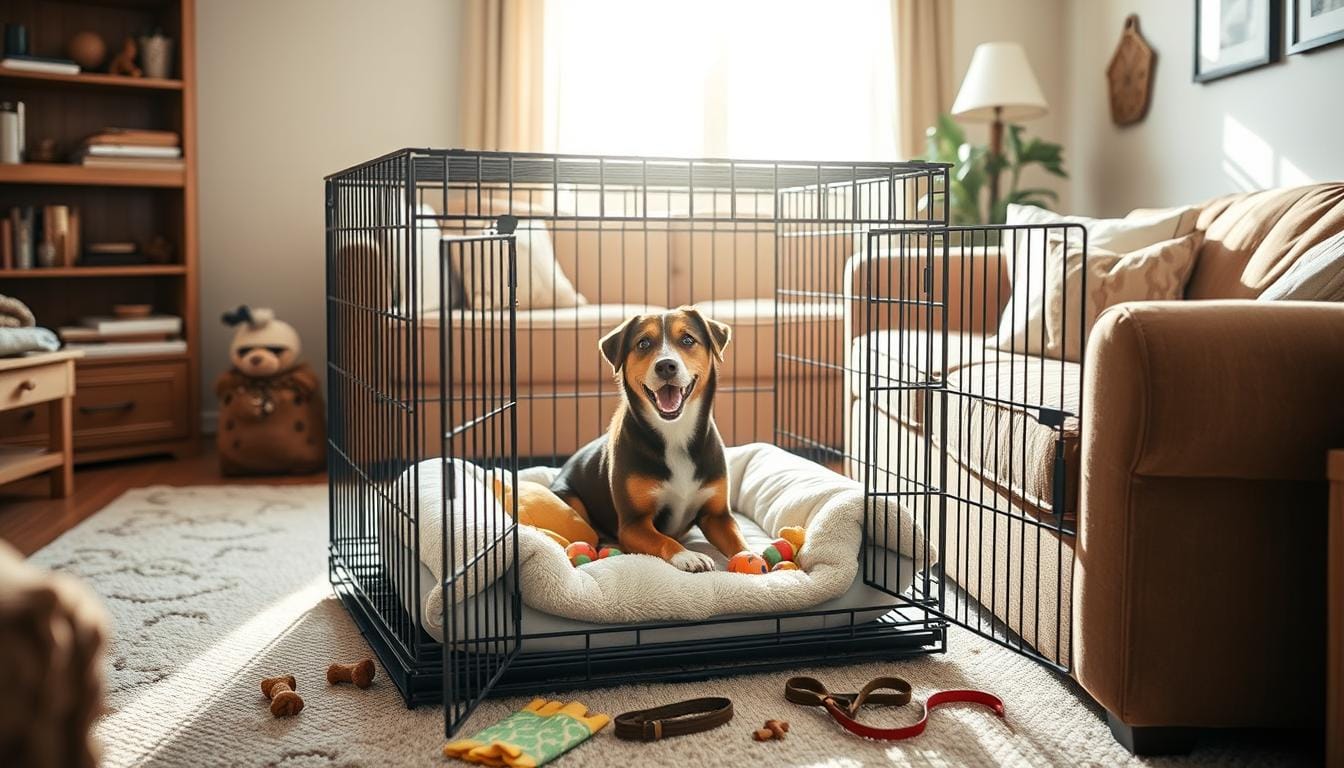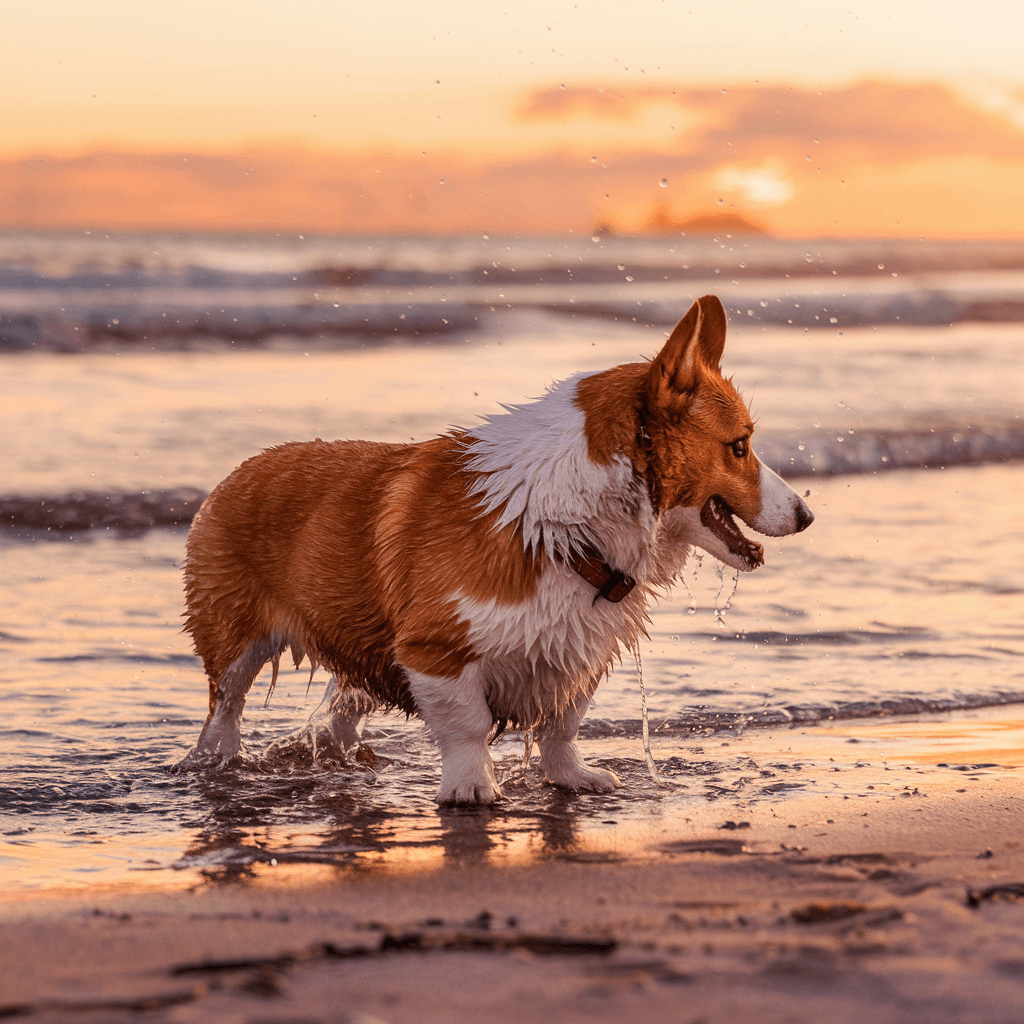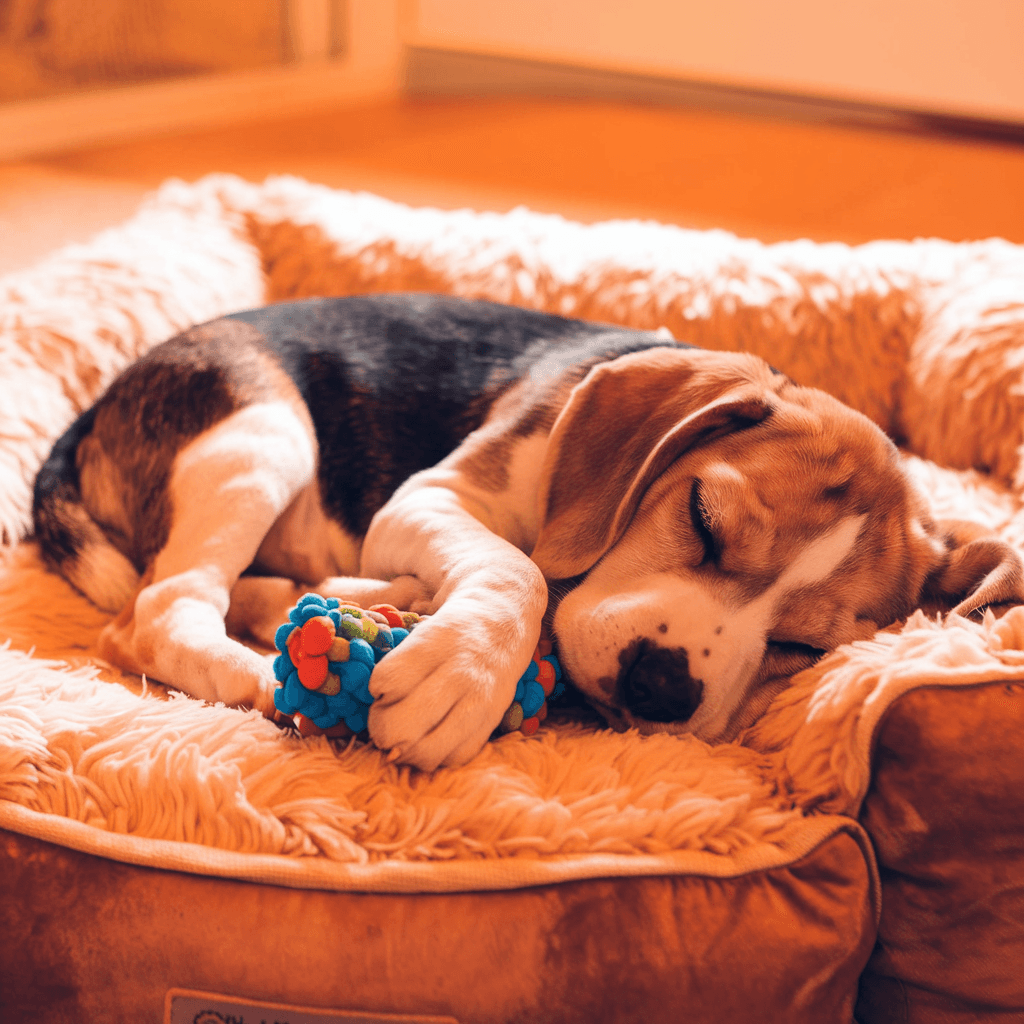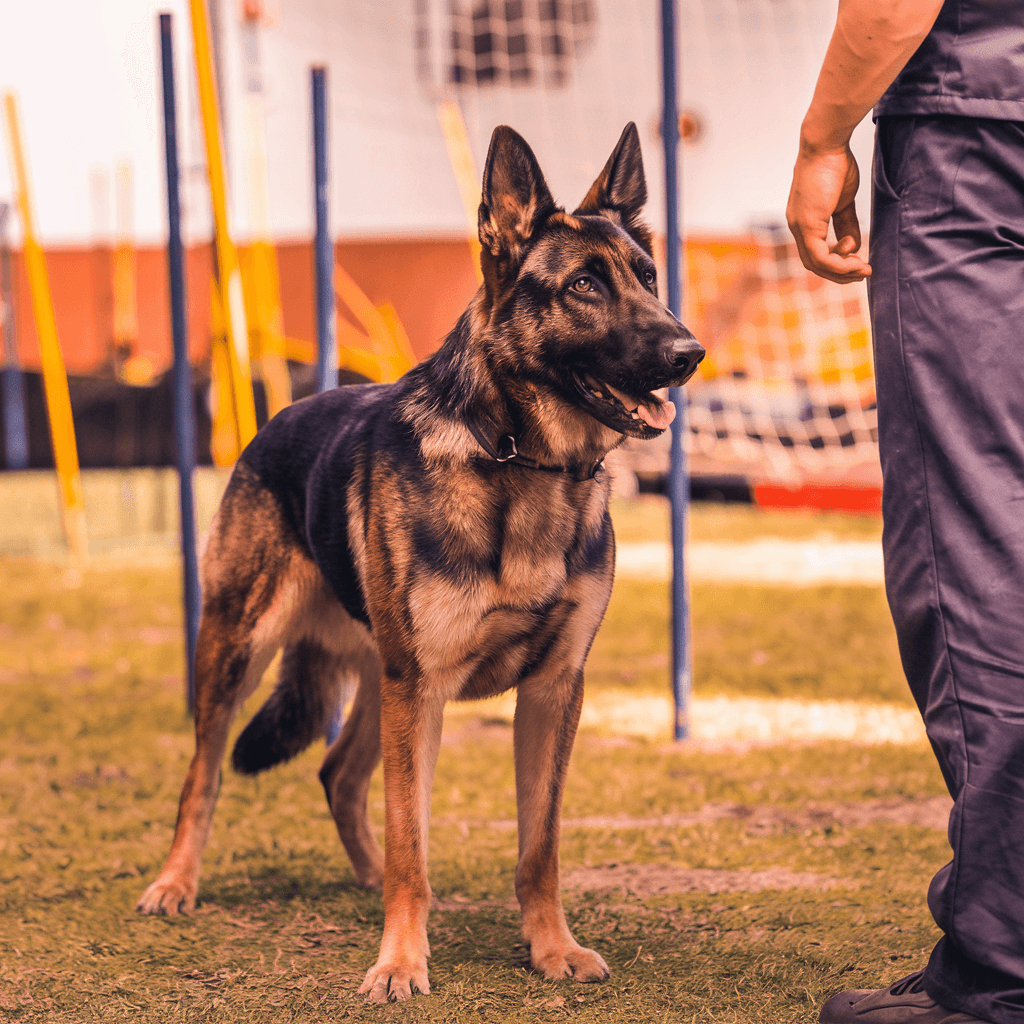Dogs can sense human emotions instinctively. They read our facial expressions and body language. This emotional connection is the base of our bond with them. When we care for their coat, we’re also nurturing this special bond.
Dog coat care is more than just looks. It’s essential for their health and happiness. Brushing and bathing are key steps in keeping their coat healthy.
Proper grooming prevents many problems, like matting and skin issues. A regular grooming routine is not just for looks. It also helps spot any health concerns early.
In this guide, we’ll cover the basics of dog coat care. You’ll learn about the right tools and brushing techniques. Whether your dog is short-haired or fluffy, we’ve got tips to keep their coat looking great. Let’s explore canine grooming and learn how to care for your furry friend.
Key Takeaways
- Regular brushing prevents matting and distributes natural oils for a healthy coat
- Different coat types require specific grooming tools and techniques
- Bathing frequency depends on your dog’s lifestyle and skin conditions
- Proper grooming helps identify and address skin issues early
- Consistent coat care strengthens the bond between you and your dog
Understanding the Importance of a Healthy Dog Coat
A dog’s coat is more than just fur. It shows their health and happiness. Keeping your dog’s coat healthy is key for pet care and offers many benefits.
Benefits of Regular Coat Maintenance
Regular grooming is great for your dog’s coat. It stops skin problems, boosts blood flow, and spots health issues early. Did you know 71% of pet owners see a shinier coat and healthier skin with a balanced diet?
- Prevents matting and tangling
- Reduces shedding
- Stimulates natural oil production
- Helps identify skin abnormalities early
How a Healthy Coat Reflects Overall Health
Your dog’s coat tells a lot about their health. A dull or shedding coat might mean they’re not getting enough nutrients. Up to 35% of a dog’s daily protein goes to their skin and coat.
Building a Bond Through Grooming
Grooming strengthens your bond with your dog. It’s a special time for both of you. Plus, a clean dog is more likely to make friends and get along with others.
“Grooming isn’t just about looks. It’s a powerful way to connect with your dog and monitor their health.”
Every dog is different, needing their own grooming routine. Whether your dog has a thick double coat or a short, growing one, knowing their grooming needs is essential for the best care.
Identifying Your Dog’s Coat Type
Knowing your dog’s coat type is crucial for good grooming. Dog fur types differ a lot, affecting how much they shed and what grooming they need. Let’s look at the main coat types and how to care for them.
Smooth-coated breeds like Boxers shed a lot but need less grooming. A quick brush a few times a week is enough. Long-coated breeds, however, need daily grooming to avoid tangles.
Wire-coated dogs don’t shed but need hand stripping. Curly-coated breeds, which shed less, need special care with conditioning sprays and pin brushes. Hairless dogs need frequent baths with gentle shampoos.
| Coat Type | Grooming Frequency | Tools |
|---|---|---|
| Smooth | 2-3 times/week | Curry brush |
| Long | Daily | Slicker brush, comb |
| Wire | As needed | Stripping knife |
| Curly | 2-3 times/week | Pin brush, conditioning spray |
| Hairless | Weekly baths | Gentle shampoo |
It’s important to groom your dog based on its breed. Dogs with coarse coats, like Poodles and Siberian Huskies, need different care than those with drop coats, like Afghan Hounds or Shih Tzus. Wire-coated terriers do well with less frequent baths and dry shampoos.
By figuring out your dog’s coat type, you can groom them better. Regular grooming not only keeps them looking good but also helps their health and happiness.
Essential Tools for Dog Coat Care
Keeping your dog’s coat healthy needs the right tools and products. We’ve listed must-have items for home care.
Brushes and Combs
Different coats need specific brushes. Smooth-coated dogs like Dalmatians do well with rubber curry combs. Double-coated dogs, like German Shepherds, need undercoat rakes.
Long-haired dogs, like Yorkshire Terriers, need daily slicker brush use to avoid tangles.
Shampoos and Conditioners
Use dog-specific shampoos to avoid skin problems. Pride + Groom has products for all coat types. For sensitive skin, hypoallergenic options are good.
Don’t forget conditioners to keep your dog’s coat soft and easy to manage.
Grooming Sprays and Wipes
Earthbath grooming wipes are great for quick clean-ups between baths. They’re plant-based and clean paws and faces well. Grooming sprays help detangle fur and add shine.
| Tool | Best For | Benefits |
|---|---|---|
| Slicker Brush | Long-haired breeds | Removes tangles and mats |
| Undercoat Rake | Double-coated breeds | Reduces shedding |
| Rubber Curry Comb | Smooth-coated breeds | Removes loose hair |
| Grooming Wipes | All breeds | Quick clean-ups |
The Art of Brushing: Techniques and Frequency
Learning how to brush your dog is crucial for their coat health. Different breeds need different grooming methods and schedules. Let’s look at the best ways to keep your dog’s coat looking great.

Long-haired and double-coated dogs need to be brushed often. Short-haired dogs can get by with brushing once a week. Poodles, with their curl coats, must be brushed frequently to avoid mats. Smooth-coated dogs should be brushed weekly to spread their natural oils.
Choosing the right brush is important for your dog’s coat type. Use a line brush for longer coats, starting at the skin and moving outward. Double-coated breeds should focus on areas like behind the ears and armpits to prevent matting.
“Regular brushing is key to maintaining a healthy, shiny coat and strengthening the bond between you and your dog.”
Brush more often during shedding seasons. Double-coated breeds, like Huskies, shed a lot in spring and fall. Use an undercoat rake to manage loose fur. Make grooming a positive experience by being gentle and consistent.
| Coat Type | Brushing Frequency | Recommended Tools |
|---|---|---|
| Long-haired | Daily | Slicker brush, metal comb |
| Short-haired | Weekly | Bristle brush, rubber grooming mitt |
| Curl-coated | 2-3 times per week | Pin brush, wide-toothed comb |
| Double-coated | 2-3 times per week | Undercoat rake, slicker brush |
By following these dog brushing tips, you’ll keep your pet’s coat healthy and easy to manage. Remember, being consistent is key to good coat care, so make it a regular part of your routine.
Bathing Your Dog: Best Practices and Products
Bathing your dog is key to their grooming. We’ll show you how to do it right. You’ll learn dog bath tips and find the best pet shampoo.
How Often to Bathe Your Dog
How often to bathe your dog depends on their coat and lifestyle. Dogs with normal skin and a healthy coat usually need a bath once a month. But, dogs with sensitive skin or allergies might need baths more often. Always check with your vet for advice.
Choosing the Right Shampoo
Choosing the right shampoo is important for your dog’s coat health. Use a pH-neutral, dog-specific shampoo to prevent skin irritation. If your dog has special needs, ask your vet for the best shampoo options.
Step-by-Step Bathing Guide
Here are some dog bath tips for a stress-free bath:
- Brush your dog to remove tangles and loose fur
- Wet your dog’s coat thoroughly, avoiding the head area
- Apply pet shampoo and massage it into the coat
- Rinse completely, ensuring no soap residue remains
- Use a damp cloth to clean your dog’s face
- Dry your dog with absorbent towels or a blow dryer on low heat
Remember, the right bathing techniques and products make bath time fun for you and your dog.
Dealing with Shedding and Matting
Managing dog shedding and detangling fur is vital for coat care. Regular brushing helps control shedding and prevent matting. For dogs that shed a lot, deshedding tools are helpful, especially in spring and fall.
Some breeds, like Cocker Spaniels and Goldendoodles, are more likely to mat. Their long, curly, or double coats need regular brushing to avoid tangles.

To deal with matting, brush your dog often with the right tools. For long-haired breeds, the Babyliss Pro Pet Long Pin Slicker Pet Brush is good. For dogs with undercoats, the FURminator Dog Grooming Rake is better. These tools help untangle fur and cut down on shedding.
| Coat Type | Brushing Frequency | Recommended Tool |
|---|---|---|
| Long, Curly | Daily | Slicker Brush |
| Double Coat | 2-3 times/week | Undercoat Rake |
| Short, Smooth | 1-2 times/week | Bristle Brush |
If mats are severe, get professional help. Groomers can safely remove mats without hurting your dog’s skin. Never use scissors to cut mats as it can hurt your pet. For breeds that mat easily, regular grooming every 4-6 weeks keeps their coat healthy.
Nutrition and Coat Health: Feeding for a Shiny Coat
A dog’s coat shows its health. Good dog food is key for a shiny coat. We’ll look at important nutrients and supplements for your dog’s coat.
Essential Nutrients for Healthy Fur
A balanced diet is vital for a shiny coat. Lean proteins like chicken and beef help. Whole grains give B vitamins for smooth skin and fur.
Vegetables like sweet potatoes and spinach add vitamins and antioxidants. These boost coat health.
| Nutrient | Source | Benefit |
|---|---|---|
| Omega-3 Fatty Acids | Wild-caught fish, flaxseed oil | Reduces inflammation, supports skin and coat |
| Omega-6 Fatty Acids | Sunflower oil, safflower oil | Maintains skin moisture, prevents dandruff |
| Zinc | Beef, beef liver | Prevents skin crusting, supports coat health |
| Biotin | Eggs | Promotes smooth skin and fur growth |
Supplements for Coat Care
Some dogs need supplements for extra nutrients. Fish oil is great for a healthy coat and skin. Biotin helps with dry skin and shedding.
Always talk to your vet before adding supplements. They ensure your dog’s diet is right.
Regular brushing and proper baths help too. If your dog’s coat problems don’t go away, see a vet. They can give specific advice.
Dog Coat Care: Seasonal Considerations
Seasonal grooming is key to your dog’s coat health. As the weather changes, so do their grooming needs. We’ll show you how to adjust your grooming to keep your dog comfortable and looking great all year.
Spring brings heavy shedding for many breeds. Siberian Huskies, Alaskan Malamutes, and Retrievers shed their winter coats. Brush them more often to manage loose fur and prevent matting. It’s also a good time to start flea and tick prevention.
Summer heat means extra care for your dog’s coat. Long-haired breeds might need a trim to protect against sunburn. Keep outdoor activities to cooler hours to avoid overheating.
Fall brings more shedding for double-coated breeds. Regular brushing removes dead fur and prepares the coat for winter. This is a great time to bathe dogs with heavy undercoats, helping with shedding.
Winter coat care focuses on keeping your dog warm. Short-haired breeds may need a coat outside. After walks, check for snow or ice in their fur, especially between paw pads.
| Season | Grooming Focus | Recommended Tools |
|---|---|---|
| Spring | Shedding management | Slicker brush, deshedding tool |
| Summer | Heat protection | Grooming scissors, bristle brush |
| Fall | Coat preparation | Pin brush, metal comb |
| Winter | Moisture control | Towel, blow dryer |
Keep a consistent grooming schedule all year, based on your dog’s coat type. Regular vet visits help catch any coat or skin problems early. This keeps your pup healthy and happy through every season.
Addressing Common Coat Problems
Dogs can face many skin issues that harm their coats. It’s important to know about these problems to keep your dog healthy and happy. Let’s look at some common coat issues and how to fix them.
Dry Skin and Dandruff
Dry skin is common in dogs, especially when it’s cold. It can come from their diet, infections, or the environment. After a bath, you might see more dandruff as it makes skin flakes and hair fall out.
For solutions, talk to your vet about the right products or changes in your dog’s life. A good diet and enough water are key for healthy skin and coat.
Excessive Shedding
Shedding is normal, but too much hair loss is a worry. Even breeds like Poodles, known for not shedding much, still lose some hair. Shedding can increase after baths.
To handle this, brush your dog before and after a bath. If they shed too much, it might mean they’re not healthy or getting the right food, so see a vet.
Hot Spots and Skin Irritations
Hot spots, or acute moist dermatitis, are painful for dogs. They need quick care. Keep the area clean and dry, and see your vet if it doesn’t get better.
Allergies are a big reason for coat and skin problems in dogs. Regular grooming helps spot and stop many issues. This keeps your dog’s coat healthy and comfy.







